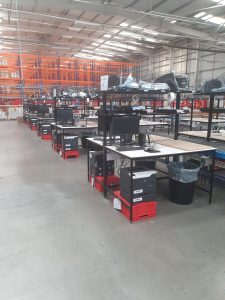Your basket is currently empty!

Warehouse labelling systems have evolved from barcodes read by simple scanners to more complex QR codes.
However, future developments in labels, according to Victoria Kickham, senior editor at the DC Velocity website, are not about digital technology, but rather more basic properties.
No matter how advanced label codes and the systems that read and process label data are, unless the label sticks properly and can withstand harsh conditions and repeated handling, there remains the issue of boxes without labels.
RFID tags enable workers with aisle picking trolleys to locate boxes with no labels, but these systems are expensive. The solution is better labels.
An issue for items stored in cold or damp conditions is labels that smudge and fall off. Labels have been developed that withstand wet environments and sub-zero temperatures. These are often referred to as “Arctic Extreme ” labels as they can withstand temperatures up to -20°F. They are laminated to protect the labels from impacts and smudging.
For items left outside, plastic and polymer labels are better than paper for withstanding UV sunlight, hail, rain, snow and freezing conditions. Industrial-grade polypropylene and polyethene labels are chemical resistant, as well as suitable for harsh weather conditions.
Labels that stick well, but are easily removed, are being developed to make the ecommerce returns process easier. A box is delivered to the customer with a shipping label on the top and a returns label on the bottom. The shipping label can be peeled off with the return label remaining, ready for the return journey.
You may also interested in:

Warehouse operators warned about energy compliance crisis
New energy regulations could render some warehouse space unusable by 2030 due to
The growing demand for warehouse conveyor belts
Research by Global Market Insights shows that the worldwide conveyor market was worth 5.7 billion US dollars in 2024 and is
